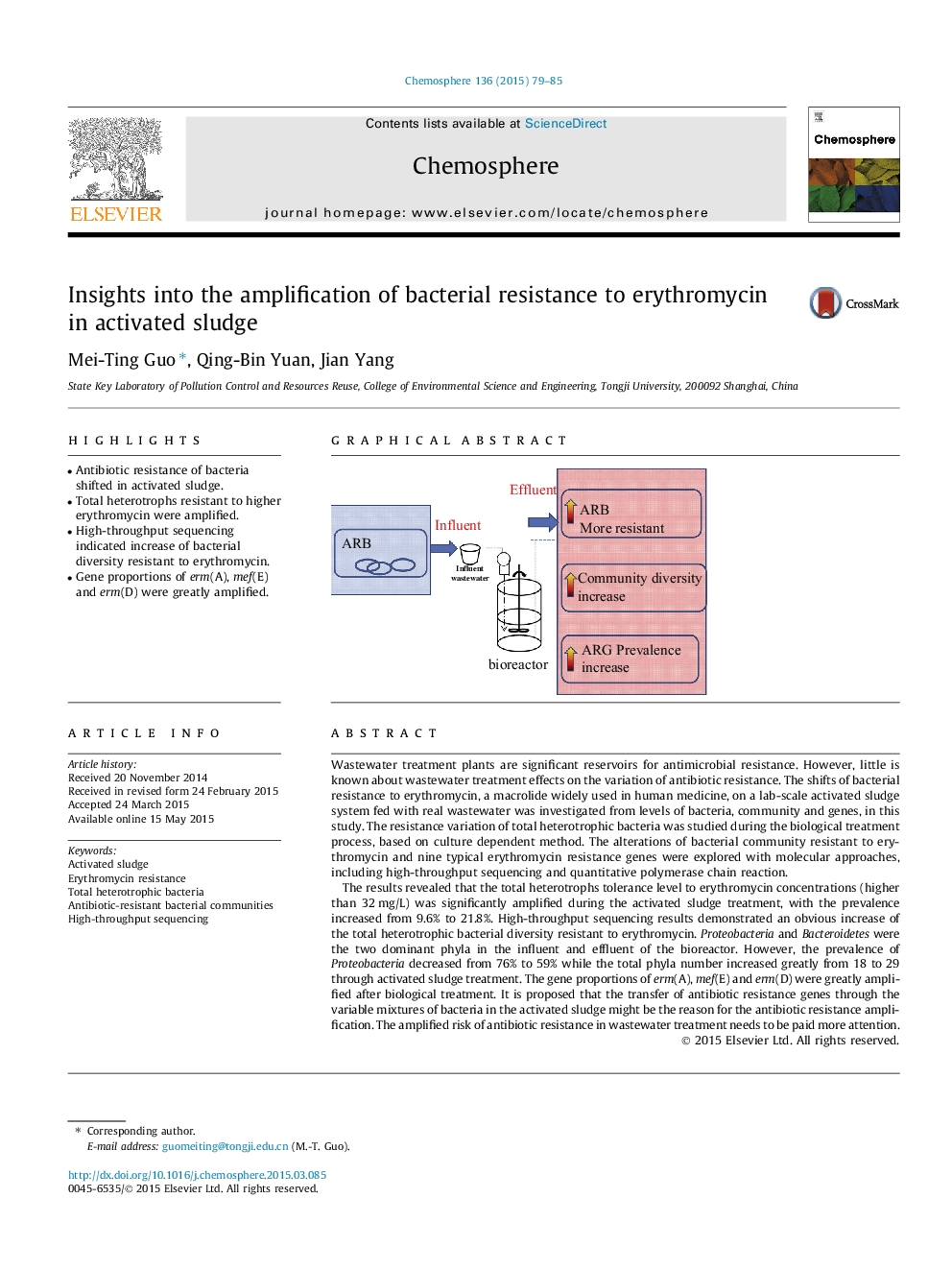| کد مقاله | کد نشریه | سال انتشار | مقاله انگلیسی | نسخه تمام متن |
|---|---|---|---|---|
| 4408259 | 1618835 | 2015 | 7 صفحه PDF | دانلود رایگان |
• Antibiotic resistance of bacteria shifted in activated sludge.
• Total heterotrophs resistant to higher erythromycin were amplified.
• High-throughput sequencing indicated increase of bacterial diversity resistant to erythromycin.
• Gene proportions of erm(A), mef(E) and erm(D) were greatly amplified.
Wastewater treatment plants are significant reservoirs for antimicrobial resistance. However, little is known about wastewater treatment effects on the variation of antibiotic resistance. The shifts of bacterial resistance to erythromycin, a macrolide widely used in human medicine, on a lab-scale activated sludge system fed with real wastewater was investigated from levels of bacteria, community and genes, in this study. The resistance variation of total heterotrophic bacteria was studied during the biological treatment process, based on culture dependent method. The alterations of bacterial community resistant to erythromycin and nine typical erythromycin resistance genes were explored with molecular approaches, including high-throughput sequencing and quantitative polymerase chain reaction.The results revealed that the total heterotrophs tolerance level to erythromycin concentrations (higher than 32 mg/L) was significantly amplified during the activated sludge treatment, with the prevalence increased from 9.6% to 21.8%. High-throughput sequencing results demonstrated an obvious increase of the total heterotrophic bacterial diversity resistant to erythromycin. Proteobacteria and Bacteroidetes were the two dominant phyla in the influent and effluent of the bioreactor. However, the prevalence of Proteobacteria decreased from 76% to 59% while the total phyla number increased greatly from 18 to 29 through activated sludge treatment. The gene proportions of erm(A), mef(E) and erm(D) were greatly amplified after biological treatment. It is proposed that the transfer of antibiotic resistance genes through the variable mixtures of bacteria in the activated sludge might be the reason for the antibiotic resistance amplification. The amplified risk of antibiotic resistance in wastewater treatment needs to be paid more attention.
Figure optionsDownload as PowerPoint slide
Journal: Chemosphere - Volume 136, October 2015, Pages 79–85
